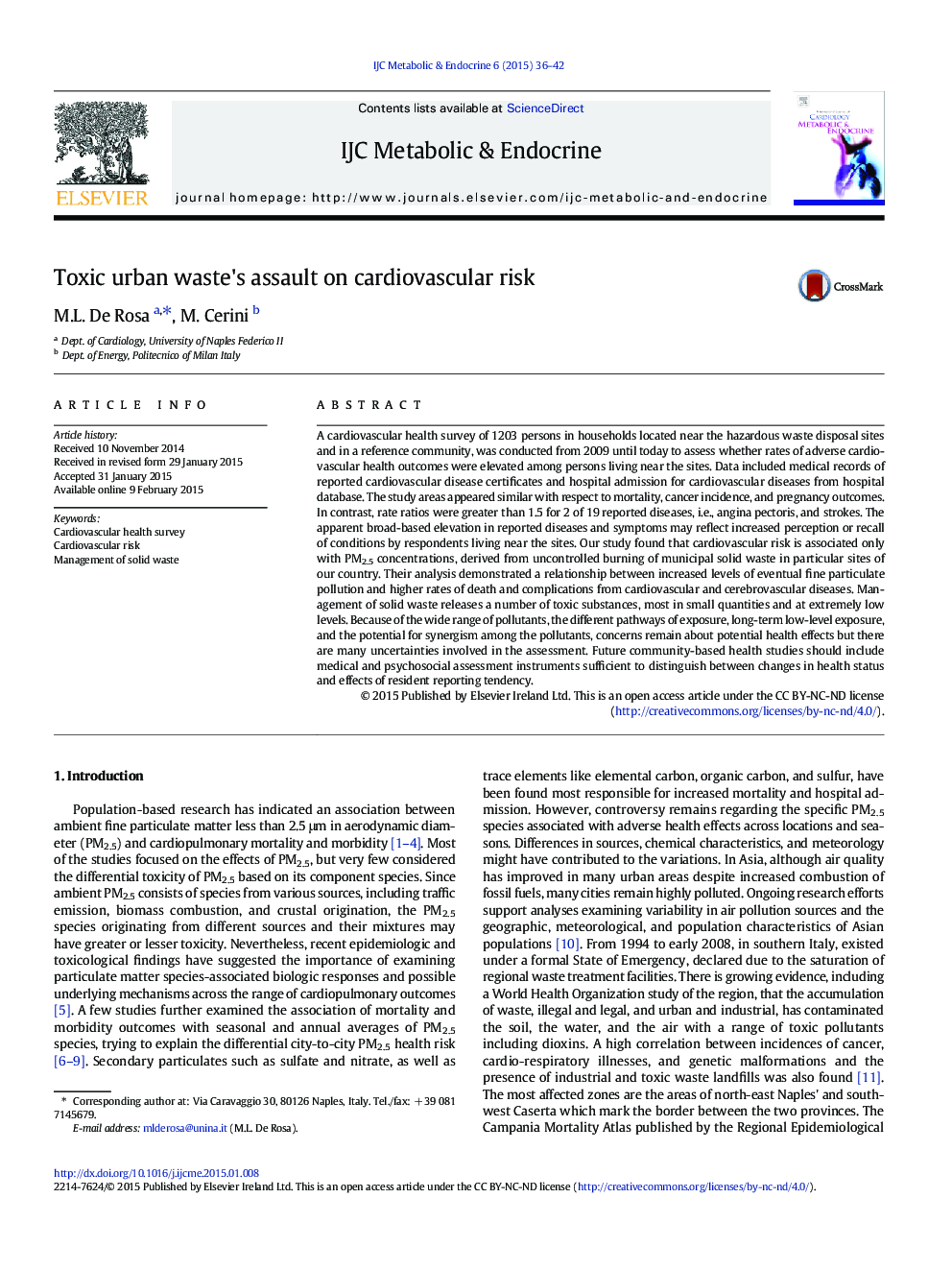| Article ID | Journal | Published Year | Pages | File Type |
|---|---|---|---|---|
| 2927210 | IJC Metabolic & Endocrine | 2015 | 7 Pages |
A cardiovascular health survey of 1203 persons in households located near the hazardous waste disposal sites and in a reference community, was conducted from 2009 until today to assess whether rates of adverse cardiovascular health outcomes were elevated among persons living near the sites. Data included medical records of reported cardiovascular disease certificates and hospital admission for cardiovascular diseases from hospital database. The study areas appeared similar with respect to mortality, cancer incidence, and pregnancy outcomes. In contrast, rate ratios were greater than 1.5 for 2 of 19 reported diseases, i.e., angina pectoris, and strokes. The apparent broad-based elevation in reported diseases and symptoms may reflect increased perception or recall of conditions by respondents living near the sites. Our study found that cardiovascular risk is associated only with PM2.5 concentrations, derived from uncontrolled burning of municipal solid waste in particular sites of our country. Their analysis demonstrated a relationship between increased levels of eventual fine particulate pollution and higher rates of death and complications from cardiovascular and cerebrovascular diseases. Management of solid waste releases a number of toxic substances, most in small quantities and at extremely low levels. Because of the wide range of pollutants, the different pathways of exposure, long-term low-level exposure, and the potential for synergism among the pollutants, concerns remain about potential health effects but there are many uncertainties involved in the assessment. Future community-based health studies should include medical and psychosocial assessment instruments sufficient to distinguish between changes in health status and effects of resident reporting tendency.
